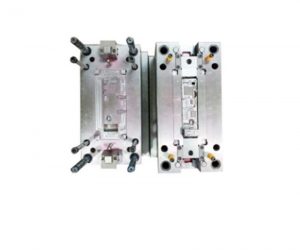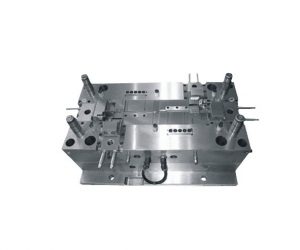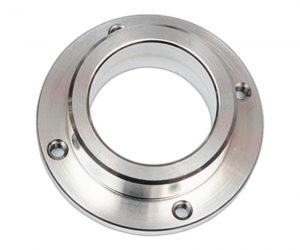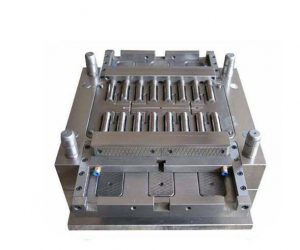Introduction
3D design has found its applications across a plethora of industries. In the automotive industry, it enables the creation of innovative car prototypes with complex geometries, reducing the time and cost associated with traditional prototyping methods. For instance, companies can design and test new car parts in a virtual environment before moving on to physical production. In the aerospace sector, 3D - designed components are lighter and more efficient, contributing to better fuel economy and enhanced performance of aircraft. The medical field also benefits greatly, with 3D - designed prosthetics and organ models providing more personalized and accurate solutions for patients.
The allure of 3D design lies in its ability to offer limitless creative possibilities. Designers can experiment with complex shapes, internal structures, and organic forms that are nearly impossible to achieve through traditional manufacturing techniques. But without a reliable printing service, these designs would remain as digital files, unable to be realized in the physical world. Yigu Technology delves deep into the process of how 3D design is transformed into reality through perfect printing services, exploring the technologies, materials, and steps involved, as well as the challenges and solutions in this fascinating intersection of design and manufacturing.
Understanding 3D Design
The Basics of 3D Design
3D design, at its core, is the process of creating three - dimensional digital representations of objects, characters, or environments. It involves using specialized software to manipulate vertices, edges, and faces to form complex shapes that mimic real - world or imaginary entities.
There are several popular software applications used in 3D design, each with its own set of features and areas of specialization:
- AutoCAD: Widely used in architecture, engineering, and construction (AEC) industries. It offers precise 2D and 3D drafting capabilities, allowing designers to create detailed floor plans, elevation views, and 3D models of buildings, mechanical parts, and infrastructure projects. For Yigu Technology example, in a large - scale architectural project, AutoCAD can be used to design every aspect of a skyscraper, from the overall layout to the smallest details of the structural components.
- SolidWorks: This software is a favorite among mechanical engineers and product designers. It provides a comprehensive set of tools for parametric modeling, which means that changes made to one part of the model automatically update related components. For instance, when designing a new smartphone, SolidWorks can be used to create the 3D model of the device, and any modification to the shape of the housing will be reflected in the internal component placement and fit.
- Blender: An open - source, cross - platform 3D creation suite. It has a broad range of tools for modeling, animation, simulation, and rendering. Blender is popular in the game development, film, and animation industries due to its versatility and the fact that it is free. Indie game developers often use Blender to create 3D assets such as characters, props, and environments for their games.
Two of the key techniques in 3D design are:
- Polygon Modeling: This is one of the most common methods. It involves creating a mesh of polygons (usually triangles or quadrilaterals) to define the surface of an object. Designers can add, subtract, or manipulate vertices, edges, and faces to shape the object. For Yigu Technology example, when creating a 3D character for a video game, polygon modeling is used to build the basic shape of the character's body, and then further refined by adding details like facial features, clothing wrinkles, etc. The more polygons used, the more detailed and smooth the model can be.
- Surface Modeling: It focuses on creating smooth, organic surfaces using mathematical equations, often through the use of NURBS (Non - Uniform Rational B - Splines). This technique is ideal for creating objects with complex curves, such as cars, boats, or character faces. For a car design, surface modeling can be used to create the sleek and aerodynamic body of the vehicle, ensuring that the curves are smooth and the design meets the aesthetic and functional requirements.
The Design Process
The 3D design process is a structured yet iterative journey that transforms a concept into a fully - fledged digital model.
- Concept Conception: This is the initial and creative phase. Designers draw inspiration from various sources such as nature, existing products, or client requirements. For Yigu Technology example, if designing a new line of furniture, the designer might look at the clean lines of Scandinavian design or the bold forms of mid - century modern furniture. They then brainstorm ideas, considering factors like functionality, aesthetics, and target audience. A mind - map can be a useful tool at this stage to organize thoughts and explore different design directions.
- Sketching: Once the initial concepts are in place, designers move on to sketching. These sketches can be rough hand - drawn concepts on paper or digital sketches created using software like Adobe Photoshop or Sketch. Sketching helps to quickly visualize and communicate ideas. For instance, an industrial designer might create multiple sketches of a new handheld tool, exploring different shapes, grips, and button placements. These sketches are not meant to be highly detailed but rather to capture the essence of the design idea.
- Digital Model Creation: This is where the real 3D design work begins. Using the chosen 3D design software, designers start to build the digital model based on the sketches. They begin with basic geometric shapes and gradually add more details through techniques like polygon or surface modeling. For example, when creating a 3D model of a spaceship for a science - fiction movie, the designer might start with a simple cube and cylinder to form the basic structure of the ship and then use polygon editing tools to add details such as engines, windows, and weapon ports.
- Iteration and Optimization: The design is rarely perfect on the first try. This stage involves multiple rounds of review and improvement. Designers may adjust the shape, size, or proportions of the model based on feedback from clients, colleagues, or their own critical analysis. They might also optimize the model for performance, reducing the number of polygons without sacrificing too much detail if the model is intended for real - time applications like video games. For example, a game developer might find that a 3D character model has too many polygons, causing the game to run slowly on certain devices. They would then go back and simplify the model while still maintaining its visual appeal.
- Material and Texture Assignment: After the geometry of the model is finalized, materials and textures are added to give the object a more realistic appearance. Different materials have different properties such as color, reflectivity, roughness, and transparency. For example, a metal object will have a high reflectivity and a smooth texture, while a wooden object will have a grainy texture and a more diffuse color. Designers use texture maps (such as diffuse, normal, and specular maps) to add details to the material. A normal map can make a flat surface appear to have bumps and grooves, enhancing the realism of the model.
- Lighting and Rendering: The right lighting can significantly enhance the mood and realism of a 3D scene. Designers place different types of lights, such as point lights, spotlights, and area lights, to simulate natural or artificial lighting conditions. They also adjust the intensity, color, and direction of the lights. For example, in a 3D interior design project, warm - colored point lights can be used to create a cozy atmosphere in a living room, while bright spotlights can be used to highlight focal points like a piece of artwork. Rendering is the process of calculating the final image based on the model, materials, textures, and lighting. High - quality renders can take a significant amount of time, especially for complex scenes, but the result is a photorealistic image that can be used for presentations, marketing materials, or further animation.
The Role of Printing Services in 3D Design Realization
Translating Digital Models into Physical Objects
The Yigu Technology table below summarizes the key differences between 3D printing and traditional manufacturing methods:
| Comparison Aspect | 3D Printing | Traditional Manufacturing |
| Geometric Complexity | Can easily create complex internal and external geometries | Challenging to create complex geometries; may require multiple operations and special tools |
| Production Speed for Small - Batches | Fast, suitable for one - off or small - batch production | Slow for small - batches due to long setup times for production lines |
| Tooling Requirements | Little to no tooling required; digital design is the main input | Often requires expensive tooling such as molds or dies |
| Material Waste | Generally low material waste as only the necessary material is used | High material waste, especially in subtractive processes |
Types of 3D Printing Technologies
There are several types of 3D printing technologies available today, each with its own set of characteristics, suitable materials, and applications. Here are some of the most common ones:
- FDM (Fused Deposition Modeling)
- Working Principle: FDM printers use a heated nozzle to melt a thermoplastic filament, which is then extruded layer by layer onto a build platform. As the material cools, it solidifies, bonding to the previous layer. ForYigu Technology example, a common desktop FDM printer might have a nozzle temperature set between 190 - 250°C, depending on the type of filament being used.
- SLA (Stereolithography)
- Working Principle: SLA printers use a light source, usually a UV laser, to cure a liquid photopolymer resin layer by layer. The laser traces the cross - section of the 3D model onto the surface of the resin, causing it to solidify. After each layer is cured, the build platform is lowered, and a new layer of resin is spread over the previously cured layer.
- SLS (Selective Laser Sintering)
- Working Principle: SLS printers use a high - power laser to selectively sinter powdered materials, such as nylon, metal, or ceramic powders. The laser heats the powder particles to their melting point, causing them to fuse together. After each layer is sintered, a new layer of powder is spread over the top, and the process continues until the entire object is formed.
Case Studies
Success Stories in Different Industries
- Medical Field:In a complex hip joint revision surgery at Shenyang Medical College Affiliated Second Hospital, the medical team faced a huge challenge. The patient, a 63 - year - old woman, had a severely worn - out and loose hip joint prosthesis, along with a large - scale dissolution of the acetabular surrounding bone. Traditional revision surgeries would require a large amount of bone grafting, which had a long operation time, high trauma, and poor early - stage stability.
The medical team utilized 3D printing technology. They first analyzed the patient's hip joint CT imaging data in detail, removed the information of the bone - dissolved parts and the loose prosthesis, and then carried out precise personalized design. As a result, they successfully 3D - printed a hip joint prosthesis and a special osteotomy guide plate that fit the patient's anatomical structure.
During the operation, the customized guide plate solved the difficult problem of determining the anteversion and abduction angles. The operation only took 1.5 hours, saving 90 minutes compared to traditional surgeries, and the intraoperative blood loss was significantly reduced. The patient was able to walk with the help of a walking frame the next day, and the pain symptoms were greatly relieved. This case shows how 3D printing can provide personalized solutions in complex medical surgeries, reducing operation time and trauma, and improving the success rate of surgeries and the recovery speed of patients.
- Automotive Industry:Ford Motor Company once faced the problem of high - cost and time - consuming production for the dashboard of the Mustang Shelby GT500. The traditional manufacturing process required complex molds and multiple processing steps.
By adopting 3D printing technology, Ford was able to design and produce the dashboard in a more innovative way. The 3D - printed dashboard not only saved 30% of the cost but also reduced the weight by 50%. This weight reduction can contribute to better fuel economy and vehicle performance. In addition, the use of 3D printing technology shortened the production cycle, allowing Ford to quickly respond to market demands and launch new models more rapidly.
- Aerospace Industry:In the aerospace industry, weight reduction and performance improvement of components are crucial. A company faced difficulties in manufacturing a complex aircraft engine component with traditional manufacturing methods. The component had intricate internal cooling channels and complex outer shapes, which were extremely challenging to produce through traditional machining and casting processes.
Using 3D printing technology, specifically Selective Laser Melting (SLM), the company was able to manufacture the component in one piece. The 3D - printed component reduced the weight by 20% compared to the traditional - made component, while improving the heat - dissipation efficiency of the cooling channels by 30%. This led to better engine performance, increased fuel efficiency, and reduced emissions.
- Architecture:A large - scale architectural project aimed to create a unique building with complex geometric facades. Traditional construction methods would have required a large number of custom - made molds for the facade panels, which was extremely costly and time - consuming.
With 3D printing technology, the architects could design the complex facade panels in 3D software and then print them on - site or in a factory. The 3D - printed panels not only accurately realized the design concept but also reduced the material waste by 40% compared to traditional cutting and shaping methods. The construction time was also shortened by 25% as the panels could be produced and installed more quickly.
- Art:An artist wanted to create a large - scale, highly detailed art installation with a complex organic shape. Traditional sculpture techniques would have been very difficult to achieve the level of detail and the smoothness of the curves as envisioned.
By using 3D scanning and 3D printing technology, the artist first scanned a small - scale clay model with fine details. Then, through 3D software, the model was scaled up and optimized for 3D printing. The final 3D - printed art installation was a perfect reproduction of the original concept, with every delicate detail intact. It also saved the artist a significant amount of time and effort compared to traditional carving and modeling methods.
Quantitative Analysis of Benefits
The following Yigu Technology table quantitatively analyzes the benefits of 3D printing in different industries:
| Industry | Cost Reduction (%) | Time Reduction (days) | Performance Improvement Indicators |
| Medical (Hip Revision Surgery) | N/A (difficult to quantify cost in this case as it's mainly about personalized solution and reducing long - term medical costs) | 90 (operation time saved compared to traditional surgery) | Faster recovery time, reduced risk of complications |
| Automotive (Dashboard Production) | 30 | N/A (production cycle shortened but difficult to quantify in days for this example) | 50% weight reduction leading to better fuel economy |
| Aerospace (Engine Component) | N/A (difficult to isolate cost reduction for this single component in a large - scale production environment) | N/A (production time not the main focus in this example) | 20% weight reduction, 30% improvement in heat - dissipation efficiency |
| Architecture (Facade Panels) | 40 (material cost reduction) | 25% reduction in construction time (assuming a 100 - day construction period, about 25 days saved) | N/A (no direct performance improvement in the sense of mechanical performance, but better realization of design) |
| Art (Art Installation) | N/A (more about creative realization than cost - benefit in a traditional sense) | N/A (difficult to quantify time saved in a traditional time - unit way) | Precise realization of complex design concepts |
As can be seen from the table, 3D printing technology brings various benefits to different industries. In the automotive and architecture industries, it can significantly reduce costs. In the medical and aerospace industries, it improves product performance and can save operation time or enhance component performance. These quantitative data clearly demonstrate the economic benefits and competitive advantages that 3D printing services bring to enterprises.
Conclusion
Recap of Key Points
In Yigu Technology conclusion, 3D design has opened up a world of possibilities across numerous industries, from revolutionizing product development in automotive and aerospace to enabling personalized medical solutions. However, its true potential can only be realized when paired with perfect printing services.
3D printing serves as the crucial link between the digital realm of 3D design and the physical world. It offers distinct advantages over traditional manufacturing methods, such as the ability to create complex geometries, faster production for small - batches, and reduced material waste. The different types of 3D printing technologies, including FDM, SLA, and SLS, each have their own characteristics, suitable materials, and applications, allowing designers and manufacturers to choose the most appropriate method based on their specific requirements.
Through the real - world case studies in industries like medical, automotive, aerospace, architecture, and art, we have seen the tangible benefits of 3D printing. It can reduce costs, save time, improve product performance, and enable the realization of complex design concepts that were previously unattainable. The quantitative analysis further emphasizes these benefits, demonstrating the economic and competitive advantages that 3D printing brings to businesses.
When choosing a 3D printing service, it is essential to consider factors such as the technology and materials offered, the quality and accuracy of the prints, the turnaround time, and the cost. Additionally, aspects like the printer's reputation, customer service, and the ability to handle complex designs and large - scale projects should also be taken into account. A reliable 3D printing service can make the difference between a successful 3D design project and one that falls short of expectations.
FAQ
- What is the best 3D printing technology for creating detailed jewelry models?
SLA (Stereolithography) is often the best choice for creating detailed jewelry models. It offers high - resolution printing with layer heights as low as 0.025mm, allowing for the creation of fine details. The smooth surface finish of SLA - printed parts also makes them suitable for the aesthetic requirements of jewelry. Additionally, SLA can use various photopolymer resins, including wax - like resins that are ideal for the lost - wax casting process commonly used in jewelry production.
- How much does 3D printing cost compared to traditional manufacturing methods?
The cost comparison depends on various factors such as the complexity of the design, the quantity of production, and the materials used. For small - batch production or one - off prototypes, 3D printing can be more cost - effective as it eliminates the need for expensive tooling. In some cases, like the automotive dashboard example, 3D printing can save up to 30% of the cost. However, for large - scale mass production, traditional manufacturing methods may still be more economical due to economies of scale.
- Can 3D printing be used for large - scale architectural projects?
Yes, 3D printing can be used for large - scale architectural projects. It can be used to create complex facade panels, structural components, and even entire buildings. In some architectural projects, 3D - printed panels have reduced material waste by 40% and shortened the construction time by 25%. However, there are still challenges such as the need for large - scale 3D printers, the development of suitable construction - grade materials, and ensuring the structural integrity of the printed components.





